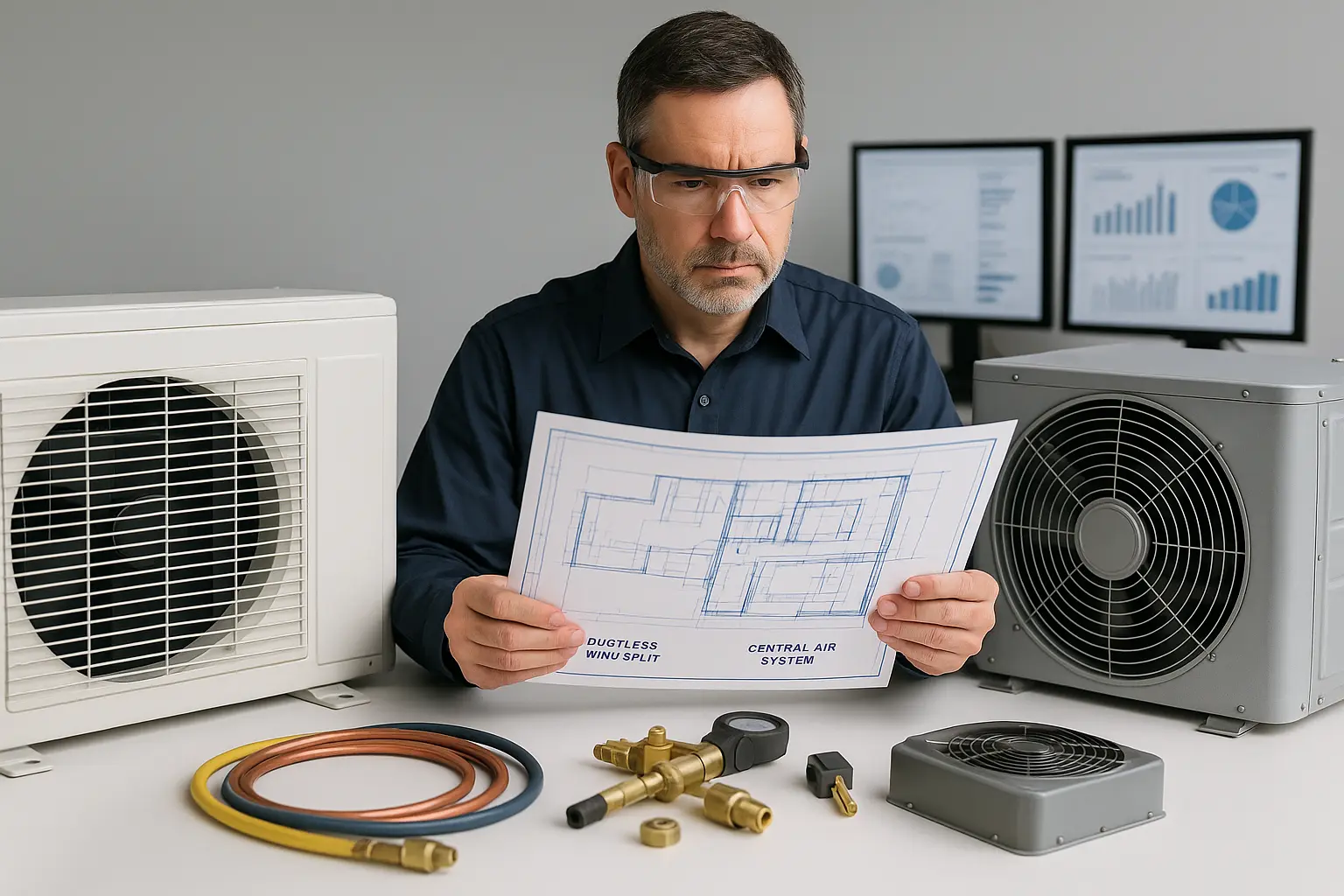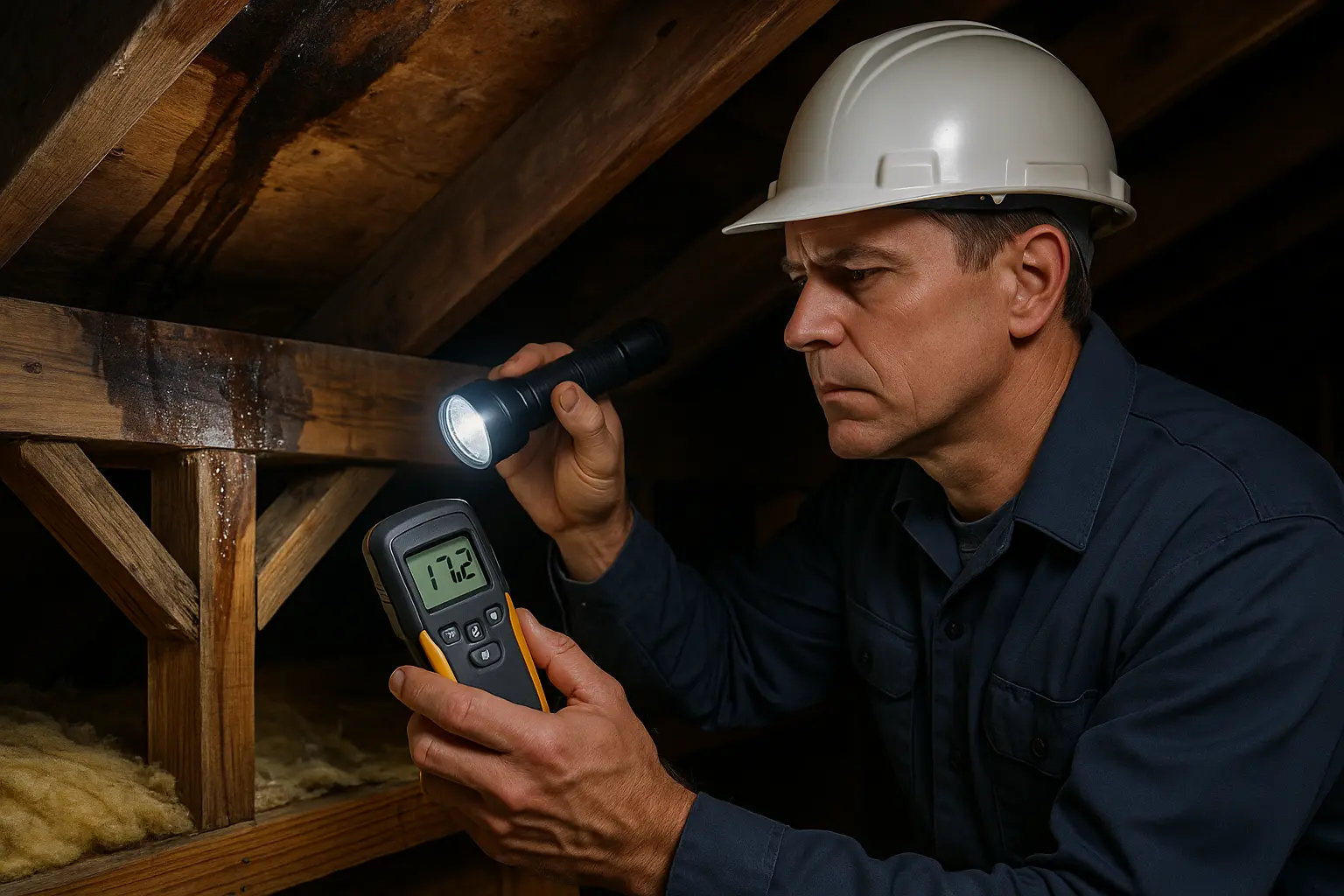Introduction
Deciding how best to cool or warm your home can feel like a big puzzle. The choice between ductless mini-split systems and central air conditioning is complex, with each option offering distinct benefits depending on your living space, climate, and budget. In this discussion, we break down how installation, cost, and energy use play major roles in choosing the right climate control solution. We examine real-life scenarios and data to help you choose wisely for your long-term comfort. Whether you’re updating an older house or designing a new one, knowing the perks and pitfalls of these systems is essential. In today’s pursuit of an efficient home setup, every element matters—from how they are installed to what they cost over time.
Efficient Home Setup for Modern Living
The idea of an efficient home setup is more than just a buzzword—it’s about achieving comfort and savings without the stress. Homeowners today are looking for solutions that balance installation ease, upfront investment, and ongoing energy use. These factors can help shape a home that is both comfortable and economical over the long haul. Embracing an efficient home setup means choosing the right technology that fits neatly into your space while keeping costs and energy use manageable.
Efficient Home Setup Strategies
When comparing ductless mini-split systems and central air conditioning, one clear advantage of mini-splits is their flexible installation. Each indoor unit works independently, meaning that only a small opening is needed for connecting to the outdoor unit. This can be a huge plus in older or uniquely built homes, where adding ducts would be intrusive or even unworkable. This modular design supports an efficient home setup by allowing you to control the temperature in specific rooms without altering the entire structure.
With an eye on space, ductless systems prove to be a smart companion for a modern, efficient home setup. Their compact, wall-mounted design saves floor space and blends well with most décor, making them ideal for apartments or compact houses. In contrast, central air conditioning requires bulky ducts, which can be hard to install if space is limited. This is especially true in urban environments where every square foot counts, and the extra ductwork might disrupt your plans for an efficient home setup.
Installation can also weigh heavily on cost. Mini-split systems generally boast lower initial installation costs because they avoid the expensive process of laying down a full duct network. In many cases, homeowners see immediate savings during installation, which adds to the appeal of an efficient home setup. When money matters, every penny saved on installation can be invested in other home improvements.
Energy conservation is another major factor in establishing an efficient home setup. Mini-split systems use zoning technology to cool or heat only the rooms in use, reducing wasted energy compared to systems that blanket-cool your entire house. This distinct advantage is highlighted when comparing the mini split vs central air systems debate. By embracing the efficient home setup philosophy, you’re not only reducing energy bills but also contributing to a greener environment.
Data from energy studies show that homes with zoning capabilities enjoy lower annual energy costs. When you cool or heat specific zones instead of the whole house, it supports an efficient home setup by reducing unnecessary energy consumption. Innovations like inverter-driven compressors in modern mini-splits adjust the output based on real-time conditions, further boosting energy efficiency.
Installation, Efficiency, and Environmental Impact
The way these systems are installed can shape your long-term expenses and comfort. Ductless systems often win in scenarios where a fast, adaptable installation is needed. Homeowners who face structural limitations or who dislike major renovations find that achieving an efficient home setup is easier with mini-splits. In contrast, central air conditioning can involve expensive, labor-intensive adjustments, especially in older properties where retrofitting ductwork might stress the building’s design. The mini split vs central air comparison often comes down to these key logistical elements, where every detail impacts your overall investment.
Beyond installation, operational costs also set these systems apart. Mini-splits shine by allowing you to set different temperatures for separate rooms, meaning you only use energy where it’s needed. For instance, cooling common areas while keeping seldom-used rooms at a moderate temperature adds to an efficient home setup and significantly cuts down on energy bills. Central air conditioning, while providing steady temperature control throughout, may waste energy on unoccupied spaces, thereby increasing costs over time.
Environmental concerns are not far behind when planning an efficient home setup. With improved SEER ratings and zone-based control, mini-split systems use electricity more wisely. This targeted approach supports sustainability, especially where energy is expensive or comes from non-renewable sources. As cities move toward greener policies, having a system that fits an efficient home setup can also make you eligible for rebates or tax incentives.
Maintenance, Durability, and Long-Term Value
Once your system is up and running, maintenance becomes the next significant factor in creating an efficient home setup. Ductless mini-splits demand less upkeep since there are no ducts to clean or repair. A simple schedule of filter cleaning and occasional checks for debris on outdoor units helps keep the system running smoothly. With fewer parts at risk of failure, the design supports long-term reliability. This simplicity can make maintenance less of a hassle and overall expenses lower compared to central air systems, which require regular duct cleaning and a more intensive service routine.
The longevity of your system also ties back to your efficient home setup. Mini-splits are known for their durability and can last two decades or more with proper care. Their straightforward design means there are fewer components that can go wrong. By contrast, centralized units—although robust—often depend on perfectly maintained ductwork to perform at their best. Over time, even a simple leak or a minor clog in the ducts can lead to a drop in performance and unexpected repair costs.
When repair needs arise, ductless options often prove easier and less costly to fix. In an efficient home setup, the modular design allows you to address an isolated issue without affecting the rest of the units. On the other hand, central air systems might need extensive work because they operate as one interconnected network. This difference can make all the difference during busy seasons when reliability is a top concern.
Conclusion
In wrapping up, the choice between ductless mini-split systems and central air conditioning boils down to your specific needs in installation, cost, and energy use. For those who cherish a straightforward, space-saving design and want to minimize the hassle, ductless systems provide a clear edge. They offer the flexibility needed for an efficient home setup that targets energy use directly, keeping utility bills in check while reducing environmental impact.
Alternatively, homeowners who value a unified approach with consistent temperature control might lean toward central air conditioning. Even though it offers even comfort throughout the home, the intricate duct system can complicate the overall installation and long-term maintenance, making it a less attractive option when striving for an efficient home setup.
Ultimately, your decision should reflect your particular living space, anticipated usage, and long-term goals. By weighing installation challenges, energy considerations, and maintenance demands, you can confidently choose a system that builds towards an efficient home setup while supporting sustainable living.
Consulting with HVAC professionals can further tailor your approach, ensuring that even in the mini split vs central air discussion, you select the option that matches your home’s design and your budget. With careful planning and consideration, achieving optimal comfort and efficiency is well within reach, setting the stage for long-lasting benefits and exceptional performance.





